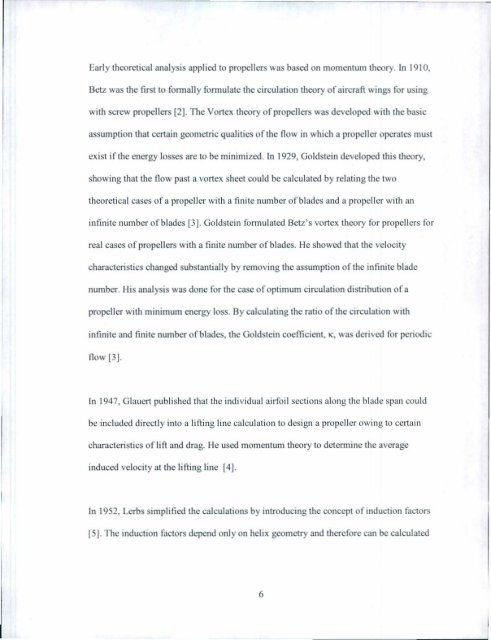HOli.. - Memorial University's Digital Archives - Memorial University ...
HOli.. - Memorial University's Digital Archives - Memorial University ...
HOli.. - Memorial University's Digital Archives - Memorial University ...
You also want an ePaper? Increase the reach of your titles
YUMPU automatically turns print PDFs into web optimized ePapers that Google loves.
Early theoretical analysis applied to propellers was based on momentum theory. In 1910,<br />
Bctz was the first to fonnally fonnulate thc circulation theory ofaircraft wings for using<br />
with screw propellers [2]. The Vortex theory ofpropellers was developed with the basic<br />
assumption that certain geometric qualities ofthc flow in which a propeller operates must<br />
eKist ifthe energy losses are to be minimized. In 1929, Goldstein developed this theory,<br />
showing that the flow past a vorteK sheet could be calculated by relating the two<br />
theoretical cases of a propeller with a finite number ofblades and a propeller with an<br />
infinite number ofblades [3]. Goldstein formulated Betz's vorteK theory for propellers for<br />
real cases ofpropellers with a finite number ofblades. He showed that the velocity<br />
characteristics changed substantially by removing the assumption ofthe infinite blade<br />
number. His analysis was done for the case ofoptimum circulation distribution ofa<br />
propeller with minimum energy loss. By calculating the ratio of the circulation with<br />
infinite and finite number ofblades. the Goldstein coefficient, K, was derived for periodic<br />
flow [3].<br />
In 1947, Glauert published that the individual airfoil sections along the blade span could<br />
be included directly into a liOing line calculation to design a propeller owing to certain<br />
characteristics of lift and drag. He used momentum theory to detennine the average<br />
induced velocity at the lifting line [4].<br />
In 1952, Lcrbs simplified the calculations by introducing the concept ofinduction factors<br />
[5]. The induction factors depend only on helix geometry and therefore can be calculated

















